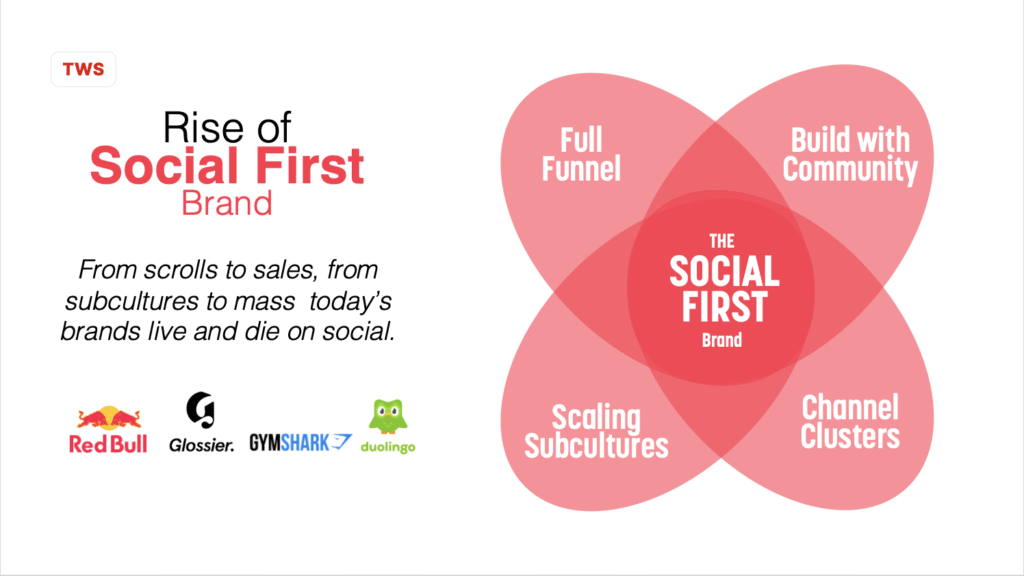
The Rise of Social-First Brands
Once upon a time, brands were engineered in boardrooms, perfected in agencies, and rolled out on TV and billboards. That playbook is dead. Today, the brands people fall in love with aren’t the ones shouting the loudest — they’re the ones living natively inside the feed. These are social-first brands.
They don’t just “use” social as a channel. They are born there. Built through comments, memes, DMs, stitches, and chaos. Brands that don’t broadcast, but participate. Brands that don’t polish, but play.
What makes a brand truly social-first? Four overlapping forces:
1. Full Funnel on Social
Social-first brands don’t see Facebook, TikTok, or Instagram as just “top funnel.” They close the loop — from awareness to purchase to retention — all inside social. From reels that spark desire to WhatsApp commerce that drives sales, they prove that social can do it all.
- Example: Gymshark built hype with fitness content on Instagram, then converted that same audience into direct e-commerce buyers.
2. Built with Community
The audience isn’t a target — they’re collaborators. Social-first brands hand the mic to their community, letting them co-create, remix, and even steer the narrative.
- Example: Glossier grew by using Instagram as a two-way feedback loop, where fans helped shape product lines.
3. Scaling Subcultures
Instead of chasing mass appeal upfront, these brands embed deeply in niches — from gamers to foodies to meme pages — then scale outward as those subcultures spill into mainstream culture.
- Example: Red Bull first owned extreme sports subcultures before becoming a global lifestyle icon.
4. Channel Clusters
Social-first brands don’t bet on one platform. They orchestrate ecosystems where each channel plays its own role — TikTok for virality, Instagram for aesthetic, YouTube for depth, Facebook groups for intimacy.
- Example: Duolingo uses TikTok for chaotic humor, Twitter for sass, and YouTube for depth, all tied to a single brand voice.
Why It Matters
Where these four forces overlap, a new breed of brand emerges — one that doesn’t just advertise in culture, but becomes culture. Liquid Death, Duolingo, Gymshark, Glossier, and Red Bull prove it globally.
The bottom line? Social is no longer just a marketing channel. It is the main stage where culture lives, attention flows, and brands are judged. If your brand isn’t built social-first, you risk being left invisible.
Thumbnail Highlight Points
- Not Campaigns, but Communities (Glossier)
- From Subculture to Mass Culture (Red Bull)
- Social = Full Funnel (Gymshark)
- Channel Clusters > One Megaphone (Duolingo)
- Social-First = Brand-First (Liquid Death)